With the hectic international schedule in cricket nowadays, it could only be a matter of time before countries will have to field a team for each format simultaneously.
If this does happen, how would they line up? In this six-part series, I’ll be looking at six international teams where I’ve followed enough domestic cricket to put up a team for each format. First up, Australia.
Tests
1. David Warner
First-class (FC) stats – 9630 runs, 49.13 average, 32 hundreds
Test stats – 7244 runs, 48.94 average, 24 hundreds
He has been brilliant for Australia in home conditions. The hard, consistent surfaces suit his style of batting, and that’s why he’s also been successful in South Africa. He has had his struggles against the moving ball, but his record is still one of the best in Australian cricket.
2. Usman Khawaja
FC stats – 10,029 runs, 41.96 average, 28 hundreds
Test stats – 2887 runs, 40.66 average, eight hundreds
Why he hasn’t been used as a Test opener more consistently is questionable. Since Chris Rogers’ retirement in 2015, no player has cemented their spot as an opener to partner Warner. Khawaja averaged 96.8 as an opener with two hundreds – one in the pink ball Test versus South Africa and that marathon 141 in Dubai. If he does come back into the Aussie Test team as an opener, he will score runs regardless of the conditions.
3. Marnus Labuschagne
FC stats – 5524 runs, 43.15 average, 13 hundreds
Test stats – 1459 runs, 63.43 average, four hundreds
He’s cemented the number three spot for the long term since the 2019 Ashes. He still wants to improve, which shows the hunger is still there and that he isn’t complacent.
4. Steve Smith
FC stats – 11,707 runs, 57.95 average, 42 hundreds
Test stats – 7227 runs, 62.84 average, 26 hundreds
Anyone that doubts this needs to have a long, hard look at themselves.
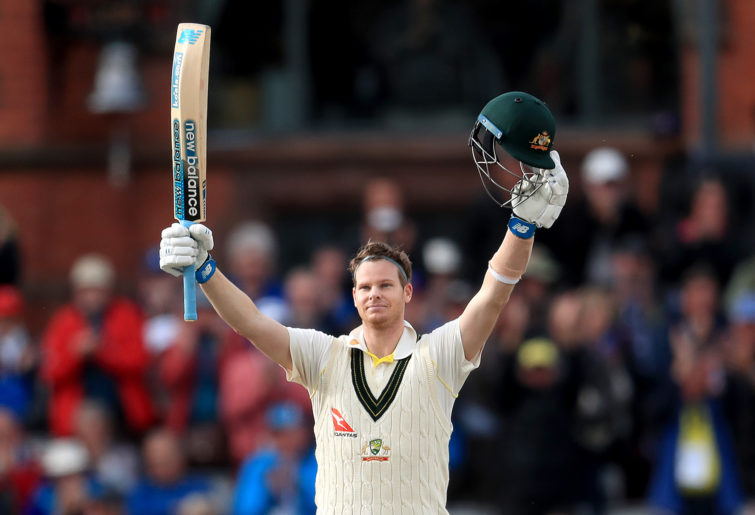
(Mike Egerton/PA Images via Getty Images)
5. Kurtis Patterson
FC stats – 4562 runs, 41.09 average, eight hundreds
Test stats – 144 runs, 144 average, one hundred
Patterson’s specialty is scoring tough runs. On countless occasions for New South Wales in the Sheffield Shield, the left-hander has bailed them out of trouble. My favourite innings as a New South Welshman would have to be his century against Western Australia at Optus Stadium. On a pitch that was tough to score runs on, Patterson looked almost flawless as he scored 107 and helped NSW to a 104-run win. In the future, I can see him being given a second chance in Test cricket and he’ll grab it with both hands.
6. Nic Maddinson
FC stats – 5566 runs, 40.33 average, 13 hundreds
Test stats – 27 runs, 6.75 average, zero hundreds
Leaving NSW was the best thing for Maddinson’s career. He has been phenomenal for the Victorians since he joined them in 2018. Since joining Victoria, Maddinson has scored 1343 first-class runs in 18 innings at an average of 83.93. It’s only a matter of time before he gets the recall that he deserves into the Australian Test squad.
7. Tim Paine (captain and wicketkeeper)
FC stats – 5732 runs, 29.39 average, two hundreds
Test stats – 1330 runs, 31.66 average, seven fifties
Dear Tim Paine, sorry for doubting you as a captain after Headingley. He’s done an excellent job as captain, and that temporary captain tag has gone faster than Jofra Archer’s bouncers. He is easily the best keeper in Australia, so no questions.
8. Pat Cummins
FC stats – 187 wickets, 22.79 average, 2.8 economy
Test stats – 143 wickets, 21.82 average, 2.76 economy
No questions asked.

(AAP Image/Scott Barbour)
9. James Pattinson
FC stats – 286 wickets, 22.2 average, 3.12 economy
Test stats – 81 wickets, 26.33, 3.22 economy
It’s tough leaving Mitchell Starc out of this side. But Pattinson has always delivered for Australia with the new ball while Starc has been average with the new ball and takes more wickets against the tail. Plus, Starc is a much better white-ball bowler than he is in Tests.
10. Josh Hazlewood
FC stats – 334 wickets, 24.56 average, 2.77 economy
Test stats – 195 wickets, 26.20 average, 2.78 economy
No questions asked, part two.
11. Nathan Lyon
FC stats – 572 wickets, 34.01 average, 3.03 economy
Test stats – 390 wickets, 31.58 average, 3.00 economy
No questions asked, part three.
ODIs
1. Aaron Finch (captain)
List A stats – 8180 runs, 41.31 average, 22 hundreds
ODI stats – 4882 runs, 41.08 average, 16 hundreds
I genuinely cannot recall Finch being dropped from the Australian ODI team since his debut bar the odd rest here and there. One of the best openers in world cricket, his presence scares bowlers enough, let alone his power hitting. Unsurprisingly, captain of this side.
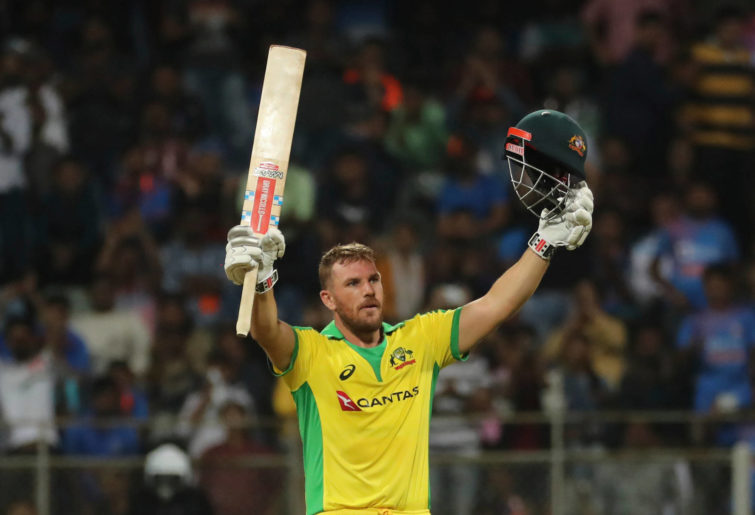
(AP Photo/Rafiq Maqbool)
2. Daniel Hughes
List A stats – 1319 runs, 57.34 average, five hundreds
It would be a bit unfair to call him the new Michael Klinger, but Hughes is very unlucky not to have played one-day internationals yet. In the past four seasons of the one-day cup, Hughes has been in the leading top-five run-scorers and was the top run-scorer last season. With Warner in the Test XI, who else but Hughes to open with Finch in the ODI XI?
3. Shaun Marsh
List A stats – 6835 runs, 44.09 average, 18 hundreds
ODI stats – 2773 runs, 40.77 average, seven hundreds
He may be a bang average Test batsman, but he’s a brilliant white-ball player. When Smith and Warner were suspended, he and Khawaja were Australia’s best one-day batsmen. He’d be the glue in the line-up, looking to bat around for the majority of the innings while the rest of the batsmen bat around him.
4. Callum Ferguson
List A stats – 5866 runs, 43.45 average, 14 hundreds
ODI stats – 663 runs, 41.43 average, five fifties
The year 2011 was the last time Ferguson played one-day international cricket, which is pretty astonishing. He’s been Worcestershire and South Australia’s best white-ball batsman for the last eight or so years. He did have a few injuries, which hampered his chances at times, but when he was firing on all cylinders, he’s always been ignored. You need experience in your top four and Ferguson provides that at four, with the ability to switch gears depending on the situation.
5. Glenn Maxwell
List A stats – 4762 runs, 32.84 average, four hundreds
ODI stats – 2877 runs, 32.32 average, one hundred
It’s a shame that he isn’t as consistent as he could be, but he’s still a proven match-winner. He is easily the best player of spin in Australia after Steve Smith. He can change the momentum of a game in a few balls and bowls handy off spin.
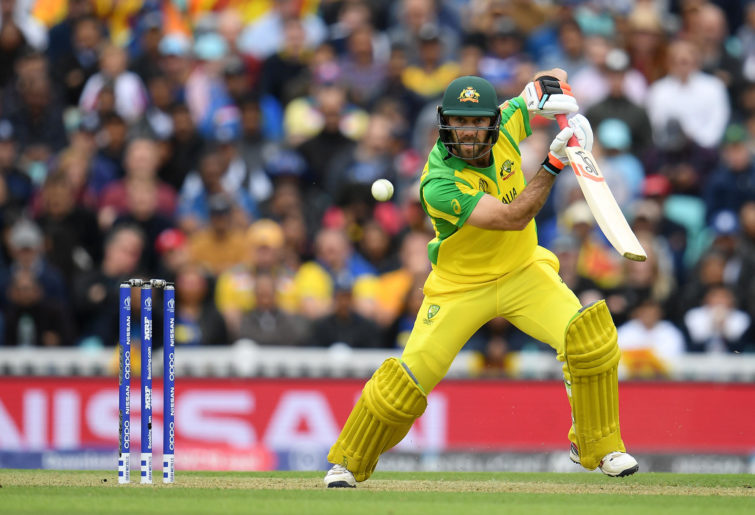
(Photo by Harry Trump-ICC/ICC via Getty Images)
6. Marcus Stoinis
List A stats – 2422 runs, 33.17 average, four hundreds, 71 wickets, 36.29 average, 5.65 economy
ODI stats – 1050 runs, 33.87 average, one hundred, 33 wickets, 43.81 average, 6.13 economy
Stoinis had a dream start to his ODI career, but has dipped since June 2018 and isn’t in the ODI set-up as of now. But I still believe he’s a worthy option to have at number six with his handy medium pacers and his all-round big-hitting ability. Although he likes to take his time at first, he is very destructive later on.
7. Alex Carey (wicketkeeper)
List A stats – 1880 runs, 32.98 average, 12 fifties
ODI stats – 884 runs, 34 average, four fifties
Carey has been a revelation for Australia. Since Brad Haddin’s retirement, no keeper-batsman could cement their spot in the Australian XI until Carey came in. In the 2019 World Cup, he was able to stop batting collapses and finish off the innings.
8. Mitchell Starc
List A stats – 249 wickets, 20.94 average, 5.02 economy
ODI stats – 178 wickets, 22.22 average, 5.10 economy
He’s been Australia’s best white-ball bowler in the past decade.
9. Adam Zampa
List A stats – 137 wickets, 34.18 average, 5.42 economy
ODI stats – 75 wickets, 36.01 average, 5.61 economy
He didn’t have the best World Cup but he’s still a world-class leg spinner. His traditional leggies don’t turn much, but his googlies are on the same level as Imran Tahir. He has the responsibility of taking wickets in the middle overs, which I’d back him to do every day of the week.
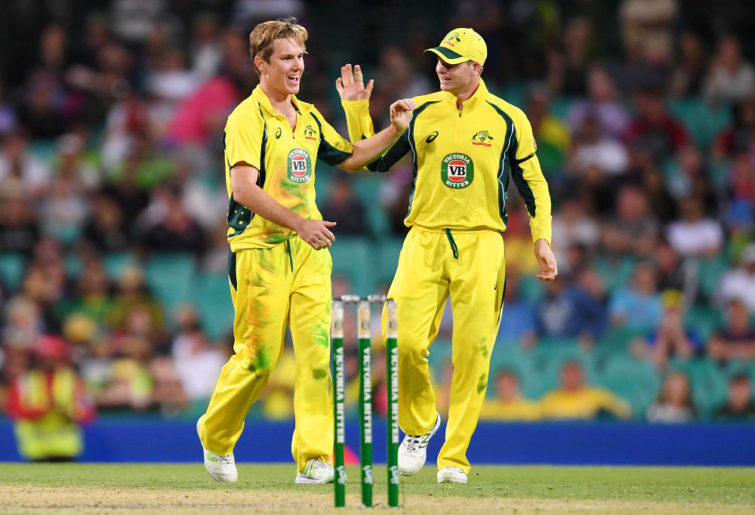
(AAP Image/Paul Miller)
10. Jhye Richardson
List A stats – 60 wickets, 29.86 average 5.47 economy
ODI stats – 24 wickets, 28.75 average, 5.84 economy
Despite his short stature, Richardson is deceptively speedy. A shoulder injury while fielding versus Pakistan last year cost him his hopes of a World Cup ticket to England. He’s still taking his time, but when he’s fit and firing, he’ll be hard to face.
11. Jason Behrendorff
List A stats – 65 wickets, 29.49 average, 4.94 economy
ODI stats – 16 wickets, 32.31 average, 5.24 economy
Dear people of Western Australia, Behrendorff is from Camden, so he’s still a New South Welshman at heart. He’s been very effective with the new ball against both left-handed and right-handed batsmen in his short ODI career. Although he’s not so useful in the death overs, he’ll create breakthroughs with the new ball and in the middle overs.
T20s
1. D’Arcy Short
T20 stats – 2954 runs, 39.38 average, two hundreds
T20I stats – 592 runs, 32.88 average, four fifties
What a role model he is for young Indigenous cricketers. He is a very destructive opener who can play shots all around the ground. Although he does struggle against spinners, Short still has plenty of time ahead in his career to rectify that.
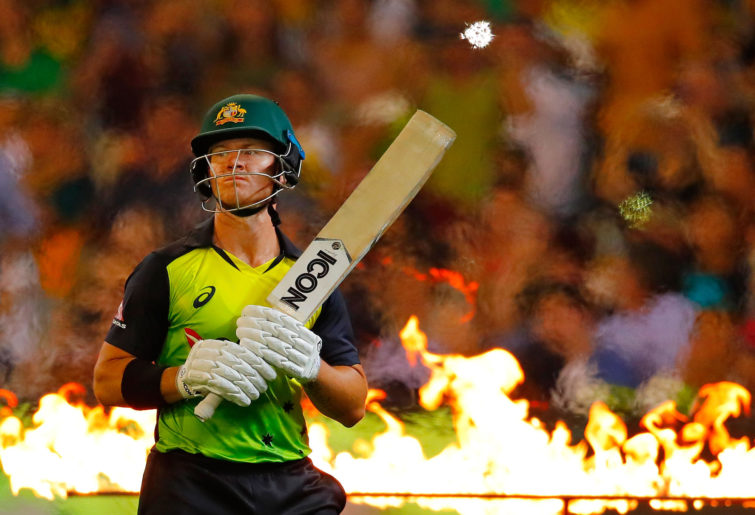
(Photo by Scott Barbour/Getty Images)
2. Josh Philippe (wicketkeeper)
T20 stats – 798 runs, 33.25 average, seven 50s
He is an exciting talent from Western Australia. How the Perth Scorchers let him go to the Sydney Sixers is laughable. He is my gloveman in the T20 XI and could replace Alex Carey before the T20 World Cup if Carey fails to deliver in his T20I role. Alongside Short, these two would cause havoc for opposition players.
3. Moises Henriques (captain)
T20 stats – 3775 runs, 26.58 average, 18 fifties
T20I stats – 159 runs, 31.8 average, two fifties
Whether it was in the IPL, BBL or for Surrey, Henriques has delivered for every T20 franchise he’s played for in the past six years. A top-order batsman, Henriques is an unbelievably great player of spin and a very good hooker of the ball. I have him as captain in this XI for doing a great job as Sixers captain and for NSW in List A cricket before quitting for mental health reasons, winning BBL09 and the one-day cup for NSW in 2016.
4. Jonathan Wells
T20 stats – 1949 runs, 34.8 average, ten fifties
He is criminally underrated in the Australian T20 circuit. Wells just quietly scores his runs for the Adelaide Strikers and gets the job done. Although he is an accumulator, he can play the finisher’s role if required from ball one. His past few seasons for the Adelaide Strikers keep him in T20 World Cup contention for Australia.
5. Alex Ross
T20 stats – 1183 runs, 28.85 average, six fifties
Dubbed the sweepologist for his wide range of sweep shots, Alex Ross has been a vital cog in T20 cricket, especially for the Adelaide Strikers and the Sydney Thunder. Ross usually takes a few balls to get his eye in but he’s terrific when he’s set, as shown in BBL09 where he scored 372 runs at 37.2 with two fifties.
6. Dan Christian
T20 stats – 4671 runs, 23.23 average, two hundreds, 231 wickets, 28.51 average, 8.4 economy
T20I stats – 27 runs, 6.75 average, zero hundreds, 11 wickets, 28.81 average, 8.92 economy
In the past four years, Dan Christian has been the best T20 finisher out of Australian cricketers and in the top five T20 finishers in the world. He’s a specialist in his role, and that’s what Australia needs in the T20 World Cup. Christian did have a poor BBL09, but that shouldn’t take away his hard work in the past four years. He nails his yorkers pretty well, and if Australia were to choose a finisher, Dan Christian has to be the first name on that sheet for the T20 World Cup.
7. Nathan Coulter-Nile
T20 stats – 140 wickets, 23.38 average, 7.76 economy
T20I stats – 34 wickets, 23.58 average, 8.26 economy
Coulter-Nile has been inconsistent in ODIs, but he’s a gun T20 bowler. His pace hurries batsmen, and he can bowl in all times of an innings and deliver. Alongside his brilliant bowling, Coulter-Nile’s batting goes under the radar as he can play as a pinch hitter up the order or score a quick 20 off ten at the end of an innings.
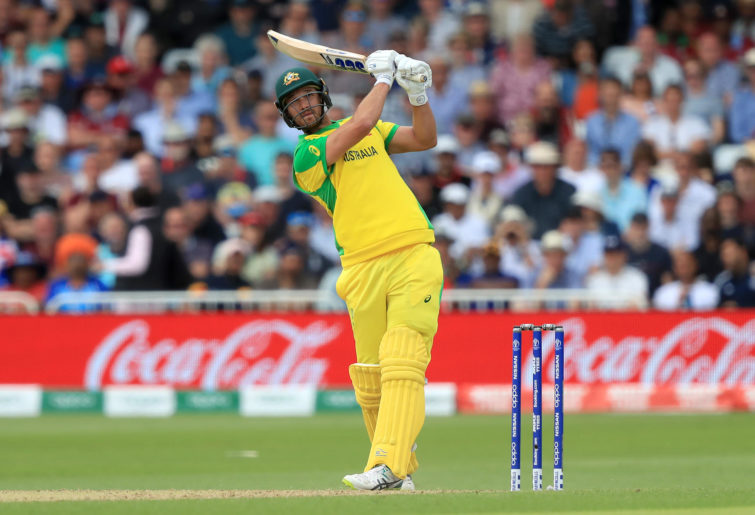
(Photo by Simon Cooper/PA Images via Getty Images)
8. Daniel Sams
T20 stats – 52 wickets, 18.36 average, 8.13 economy
For those that have seen Mustafizur Rahman bowl, you’ll know that Sams is very similar to the Bangladesh left-arm seamer. Operating in the mid-130s, Sams doesn’t swing the ball much, but he’s a quality death bowler. With a deadly off-cutter that seems very hard to pick, Sams picked up most of his 30 BBL09 wickets with his off-speed deliveries. Just like Coulter-Nile, Sams also can hit a few into the stands with the bat.
9. Sean Abbott
T20 stats – 107 wickets, 21.38 average, 8.42 economy
T20I stats – three wickets, 20.33 average, 6.1 economy
Abbott is under-appreciated in T20 cricket. He bowls the tough overs, and despite some poor overs with the ball in the slog overs, he is still a terrific T20 bowler. He’s a genuine wicket-taker. In the past four seasons of BBL, Abbott has taken 69 wickets at an average of 17.95. He’s a must in the Australian team during the T20 World Cup.
10. Cameron Boyce
T20 stats – 87 wickets, 25.27 average, 7.61 economy
T20I stats – eight wickets, 19.00 average, 6.6 economy
Boyce has delivered countless times in the BBL, whether it was for the Adelaide Strikers, the Hobart Hurricanes or the Melbourne Renegades. It was surprising to see him bowl so well for Australia in T20 internationals only for Adam Zampa and Ashton Agar to go to India for the 2016 T20 World Cup. He is a handy lower-order batsman to have in the side as well.
11. Fawad Ahmed
T20 stats – 110 wickets, 24.24 average, 6.85 economy
T20I stats – three wickets, 22.66 average, 8.50 economy
Out of all the wrist-spinners in Australian cricket at the moment, Ahmed is the hardest to pick. Both his leg-spinners and googlies turn a mile. The control he has over all his deliveries regardless of the types of pitches shows that he’s a world-class leg spinner. Despite his brilliant performances with the ball in the BBL, Pakistan Super League and Caribbean Premier League, Ahmed surprisingly hasn’t played international cricket since 2013. In this XI, he and Boyce would have a field day bowling in tandem and picking up wickets in the middle overs.



































































































